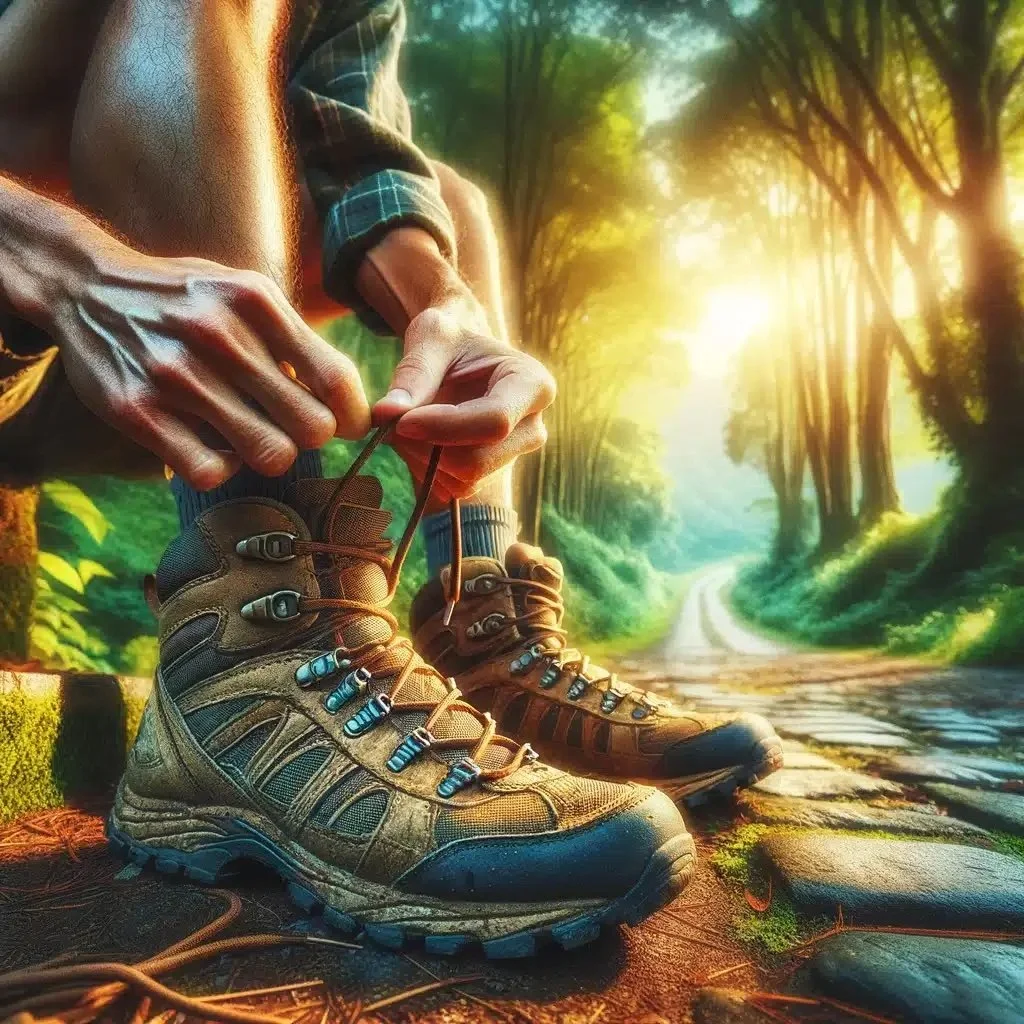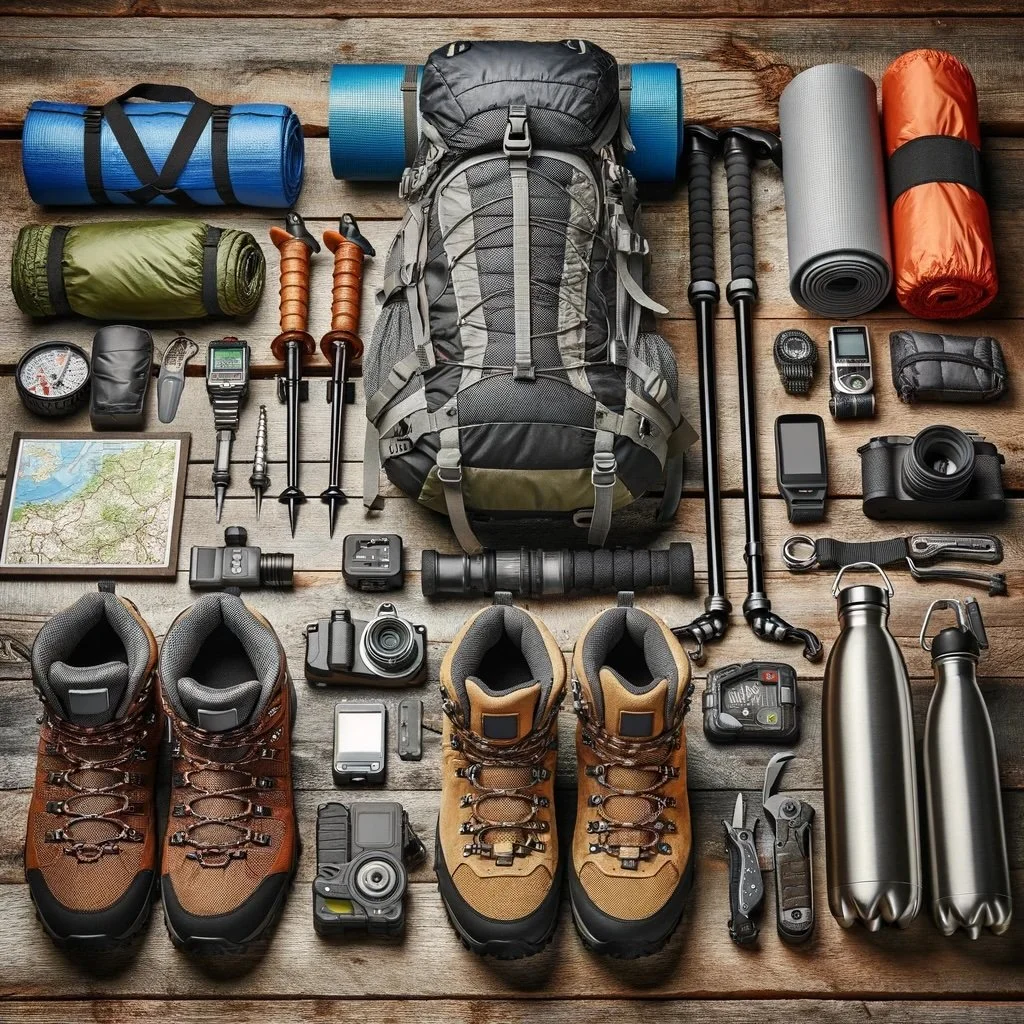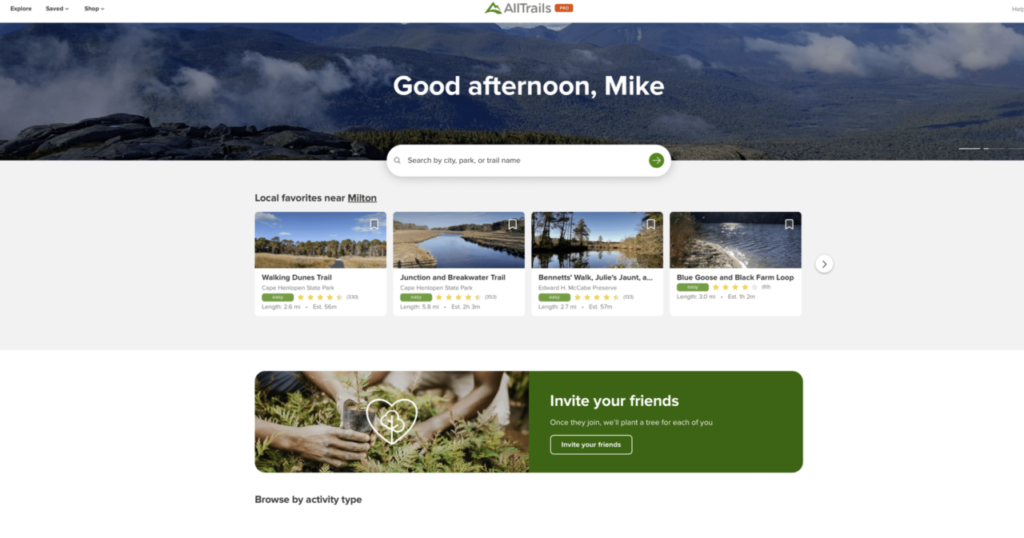5 Essential Tips For New Hikers
Table of Contents
Starting your first hike can be both exciting and nerve-wracking. What do you really need to know before you hit the trails? Whether picking the right shoes or figuring out how challenging a trail might be, I've got all the tips you need. With these practical insights, you can step onto the trail with confidence. Let's take out the guesswork and prepare you to enjoy your adventure with the best advice for new hikers.
Key Takeaways
Start with the Basics: Learn essential hiking skills like reading maps, understanding trail markers, and basic first aid.
Proper Gear is Crucial: Invest in good hiking boots, weather-appropriate clothing, and a reliable backpack.
Know Your Limits: Start with shorter, easier trails and gradually increase difficulty as you gain experience.
Stay Hydrated and Fueled: Always carry enough water and snacks to keep your energy levels up.
Leave No Trace: Respect nature by following the Leave No Trace principles to preserve the environment.
Hiking 101: What Every Newbie Needs to Know
Hiking is exciting and terrifying. The call of the wild is strong and as a newbie you’re about to jump in. Hiking isn’t a walk in the park – it’s a way to connect with nature and test your boundaries. But before you hit those newbie trails here’s what you need to know.
Start Small and Build Up - You may want to tackle mountain peaks but starting within your comfort zone is key. Many newbie hikers find their stride (and joy) on trails less than 5 miles long. These shorter, more gentle trails are perfect for building confidence and endurance without burning out.
Enjoy the Experience - Hiking is more than packing a bag; it’s about preparing for an experience. Enjoy the fresh air while respecting your own limits. Start small and let each trail teach you more about yourself and the world. Whether the crunch of gravel under your boots or spotting wildlife, every hike adds a new chapter to your adventure story.
Decoding Trail Types and Difficulty
Choosing the right trail can make or break your first hiking experience. Easy trails, with minimal elevation gain (less than 250 feet per mile) and under 5 miles, are perfect for beginners. They're great for families or anyone looking to ease into hiking.
Moderate trails, ranging from 5 to 8 miles with a few thousand feet of elevation gain, are ideal once you're more confident and ready for a challenge. Remember, an hour per thousand feet of elevation gain is a good rule of thumb. Save the rugged trails, which often climb more than 500 feet per mile, for when you've got a few successful hikes under your belt.
Preparing Your Body for the Trail
Your body is your most important gear on any hike. Here are some tips to get it trail-ready:
Assess Your Fitness Level: Start with a low-risk hike to see where you are.
Targeted Exercises: Strengthen your legs and core, improve balance, and boost your cardio fitness.
Pace Yourself: Hiking isn't a race. Plan to gradually tackle more challenging hikes. This way, you can enjoy your progress without overdoing it.
Think of your body as the foundation of a house—the stronger it is, the more resilient you'll be on the trail. Remember, hiking is about enjoying the journey, not just rushing to the finish line. Take it one step at a time and savor the experience.
Essential Gear for Your First Hike
Packing the Ten Essentials is a commitment to your safety and a badge of a prepared hiker. Whether you're faced with a sudden weather change or a minor mishap, these items ensure you can handle it with poise and preparedness.
Getting ready for your first hike is like preparing for a mini adventure. It's not just about the excitement; having the right gear is crucial for a comfortable and safe journey. Here's what you need to get started:
Clothing
Start with moisture-wicking fabrics to keep you dry and comfortable. These clothes pull sweat away from your skin, helping you stay cool in the heat and warm in the cold. Avoid cotton, as it retains moisture and can make you feel damp and chilly.
Backpack
A sturdy backpack is essential. Aim for one between 15 to 30 liters to carry your supplies without being too bulky. This size is perfect for day hikes, giving you enough space for essentials without weighing you down.
The Ten Essentials
Make sure to pack the Ten Essentials for safety and comfort:
Navigation: Map, compass, or GPS.
Sun Protection: Sunglasses, sunscreen, and a hat.
Insulation: Extra clothing layers.
Illumination: Headlamp or flashlight.
First-Aid Supplies: Basic first aid kit.
Fire: Waterproof matches or lighter.
Repair Kit and Tools: Multi-tool or knife.
Nutrition: Extra food.
Hydration: Extra water.
Emergency Shelter: Tent, space blanket, or tarp.
Budget-Friendly Tips
Don't let cost deter you from hiking. You can find great deals by shopping during sales, browsing second-hand stores, or checking out online marketplaces. Prioritize value, but don't compromise on safety or comfort. Sometimes, it's worth spending more on critical items like hiking boots or a backpack to ensure they last and keep you comfortable.
Remember, the best gear is the gear that gets you out on the trail. Don't stress about having the latest or most expensive equipment. Focus on finding what works for you and fits your budget. The goal is to get out there and enjoy the adventure. So gear up, hit the trail, and embrace the journey ahead.
How to Choose a Beginner Hike
Choosing the right trail is key when you’re just starting out. It’s all about matching the trail to your fitness level and comfort zone. Think of it like choosing a book for your reading level—too easy and you won’t learn much; too hard and you’ll get frustrated. Here are some tips to help you find the perfect beginner hike.
Start with Your Fitness
First, be honest about your current fitness. If you’re new to hiking or haven’t been active in a while, look for trails with little to no elevation gain and short distances. Trails under 5 miles with gentle grades are perfect for building confidence and endurance without overwhelming yourself.
Look for Well-Marked and Maintained Trails
As a beginner, you’ll want trails that are well-marked and maintained. These trails offer the safety and clarity you need to feel confident. They usually have clear signage and are easier to follow which is great for avoiding getting lost on your first few hikes.
Set Realistic Expectations
Setting realistic expectations is key to a good hike. Start with shorter, easier trails and work your way up to more challenging ones as you get fitter and more confident. This way you’ll enjoy the journey and not get discouraged.
Using Apps and Websites to Discover Trails
In today's digital age, finding your next hiking trail is just a few taps away. My go-to app for discovering new trails is AllTrails. It's a fantastic resource packed with trail maps, user reviews, and detailed descriptions of local hikes.
Why I Love AllTrails
AllTrails is my app of choice because it offers everything I need to plan a hike. It features:
One of AllTrails+'s best features is offline map downloads. This is a lifesaver when hiking in areas with poor cell service. You can navigate confidently, knowing you won't get lost even if your phone loses signal.
User reviews and weather forecasts integrated into AllTrails are like having a personal guide in your pocket. These features help you make informed decisions about where and when to hike. You can check recent trail conditions, see if others have encountered any issues, and get tips on what to bring or watch out for.
With AllTrails, you can easily find trails that match your fitness level and interests. Whether looking for a short, easy hike or a challenging all-day trek, the app helps you set the stage for a memorable and safe outdoor adventure.
Visiting National Parks and Designated Trails
National parks are the crown jewels of the hiking world, offering well-marked and maintained trails perfect for beginners. With clear signage and paths that wind through breathtaking landscapes, these parks provide a secure environment to develop your hiking skills. Plus, park rangers are invaluable resources, ready to offer advice on trails that match your abilities and goals.
Why Start in National Parks?
Starting your hiking journey in a national park ensures a smoother transition into the hiking community. The paths are well-tread, reducing the chance of missteps, and the variety of trails means there's something for everyone, from the most tentative beginners to those ready for a bit more challenge.
Tips for Getting the Most Out of Your Trip
Here are some tips to help you make the most of your visit to a national park:
Do Your Research: Before you go, research the park online. Check the official park website for maps, trail descriptions, and alerts or closures. This will help you plan your visit and prepare for what lies ahead.
Talk to Park Rangers: Stop by the visitor center and chat with the park rangers when you arrive. They can provide valuable insights into trail conditions, recommend the best beginner-friendly hikes, and offer safety tips.
Pick Up a Park Map: Always grab a physical park map. Even if you use a digital app like AllTrails, having a backup map is a good idea in case your phone dies or loses signal.
Start Early: Arrive early in the day to beat the crowds and have a more peaceful hiking experience. Mornings are usually more relaxed and less busy, making your hike more enjoyable.
Stay on Marked Trails: Stick to the designated paths to avoid getting lost and to protect the natural environment. National parks work hard to maintain their trails, and staying on them helps preserve the beauty for everyone.
Pack the Essentials: Bring the Ten Essentials, plenty of water, and snacks. Even on short hikes, being prepared for any situation is essential.
Leave No Trace: Follow the Leave No Trace principles by packing out all your trash, staying on trails, and respecting wildlife. This helps keep the parks pristine for future visitors.
Enjoy the Journey: Take your time and enjoy the scenery. National parks are full of natural wonders, so stop and appreciate the views, wildlife, and plant life along the way.
Joining the Hiking Community: Where to Find Hiking Buddies and Groups
Hiking is more than a solo adventure; it's a community experience full of shared stories and new friendships. Here's how joining the hiking community can make your hikes even better:
Safety: Hiking with others means help is available if you need it.
Companionship: Sharing the trail makes hikes more fun and memorable.
Learning and Sharing: Swap tips and stories with fellow hikers.
Finding Your Tribe
Connecting with other hikers can turn a routine hike into a cherished memory. Here's how to find your hiking buddies:
Meetup.com: Great for finding local hiking groups and events.
REI Co-op: Offers classes and trips to meet experienced hikers.
Online Forums and Social Media: Join Facebook Groups and other online communities dedicated to hiking. These platforms are perfect for finding buddies and learning about group hikes.
Local Hiking Clubs and Meetups
Local hiking clubs and meetups are fantastic for newcomers. Here's what you get:
Knowledge Sharing: Learn from experienced hikers.
Friendships: Meet people who share your passion for the outdoors.
Safety in Numbers: Group hikes are a great way to stay safe.
Trail Etiquette and Safety: Beginners’ Guide to Hiking Responsibly
Your first hike is a big adventure but knowing trail etiquette and safety is just as important as having the right gear. Think of the trails as shared spaces where respecting fellow hikers, the environment and wildlife makes the experience better. Here’s how to hike responsibly and safely.
Trail Etiquette 101 - Trail etiquette is like the rules of the outdoors, so everyone has a good time.
Yield to Uphill Hikers: When you see someone coming up, move aside and let them through.
Greet Fellow Hikers: A nod or a smile is enough.
Safety First - Safety should always be number one. Whether you’re hiking with friends or solo, here’s what to do:
Tell Someone Your Plan: Let a friend or family member know your route and expected return time.
Be Prepared for the Unexpected: Weather can change quickly and trails can be unpredictable. Pack accordingly.
Leave No Trace: Keep the environment clean by packing out trash and minimising your impact.
Multi-Use Trails - Multi-use trails are shared by hikers, mountain bikers and sometimes horseback riders. Here’s how to share the trail:
Yield to Horses: Step to the downhill side of the trail and let them through.
Give Space to Bikers: Allow mountain bikers to pass safely. When overtaking, say “On your left!” to let others know you’re passing.
Communicate Clearly: Use signals and verbal cues to avoid collisions and keep everyone safe.
Interacting with Wildlife Safely - Seeing wildlife is a bonus to your hike. Still, you must handle these encounters with care:
Keep Your Distance: Always stay back from animals.
Make Noise in Bear Country: Use your trekking poles or talk loudly to alert bears to your presence and not surprise them.
Respect Their Habitat: Disturbing wildlife can disrupt their behavior and create dangerous situations.
First Hike Planning
The real fun starts with planning your first hike. Choose a trail that suits your fitness level and make sure you have all the gear, food, water and right clothes for the weather. Good planning is key to a successful hike, so you’re prepared for whatever the trail throws at you.
Pre Hike
Before you head out check the weather forecast and any trail closures or hazards. Register at the trailhead and leave your details in case of an emergency—your future self will thank you for that.
Setting Realistic Expectations
When setting your hiking goals balance your ambitions with your abilities. Start with trails up to 5 miles long with flat terrain. It’s not a race; take breaks, have a snack and enjoy the views.
As you get more experienced let the trails teach you. Gradually increase the difficulty and length of your hikes. It’s not about going from easy trails to mountain peaks overnight; it’s about building endurance and skills one hike at a time. By setting and achieving realistic goals you’ll feel good about your progress and enjoy the views.
Weather Watch: Check the Forecast Before You Go
Mother Nature can be unpredictable so always check the weather forecast before you hike. Knowing what to expect can mean the difference between a sunny hike and a wet and miserable one. Websites specific to trails give you forecasts to help you dress and pack accordingly, whether that means a poncho for rain or extra water for heat.
Even with good planning unexpected things can happen like sudden snow, river crossings or landslides. Be flexible and be ready to adjust your plans. Sometimes turning back is the safest option. Keeping an eye on the skies and being adaptable means your hiking stories will be full of adventure not disaster.
Next Steps: From Short Hikes to Longer Treks
Hiking is inherently evolutionary; a simple woodland walk can morph into a thousand-mile journey. Once you've mastered the art of short hikes, it's time to look to the horizon and set your sights on longer, more challenging treks. Gradually increase the difficulty of your hikes, incorporating modest elevation gains and varied terrain to build your stamina and skill set.
As you prepare for these extended journeys, here are some hiking tips to keep in mind:
Conduct thorough research on routes.
Match your fitness to the demands of the hike.
Seek the wisdom of those who've tread the paths before you.
Keep a log of your hikes to track your progress, and use it as a guide to determine when you're ready for the next challenge.
With each step forward, you're not just hi but embarking on a lifelong adventure that beckons with endless possibilities and uncharted trails.
Final Thought
As you put on your boots and hit the trail remember it’s not just a physical journey it’s a journey of self discovery and the world around you. Enjoy the beauty of nature, the company of fellow hikers and the growth that comes with each step. Whether it’s a easy stroll or a tough climb know you belong in the great outdoors. Happy hiking and may your adventures be filled with epic views, memorable moments and the sense of achievement that only hiking can give. Here’s to many more trails and the never ending horizons.
FAQ
Do I need to be in great shape to start hiking?
No, you don't need to be in great shape to start hiking. You can begin with short, easy trails and gradually build your endurance as you go. Just pick a trail that matches your current fitness level.
What should I bring on my first hike?
On your first hike, bring water, food, a map or GPS, appropriate clothing, the Ten Essentials for Safety, sturdy hiking boots, and a backpack.
How do I find hiking trails near me?
You can easily find hiking trails near you using apps like AllTrails or checking the National Park Service websites. Additionally, consider joining local hiking clubs or online forums for personalized recommendations.
Is it safe to hike alone?
Yes, it is safe to hike alone if you take the proper precautions, such as informing someone of your route, carrying the Ten Essentials, and sticking to well-marked trails. Stay safe out there!
How can I ensure I'm following trail etiquette?
To ensure you follow trail etiquette, remember to yield the right of way, greet others, stay on designated trails, and practice Leave No Trace principles. This will help minimize your environmental impact and ensure a pleasant experience for everyone.









